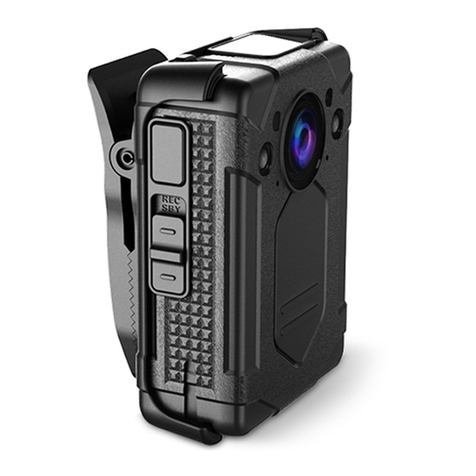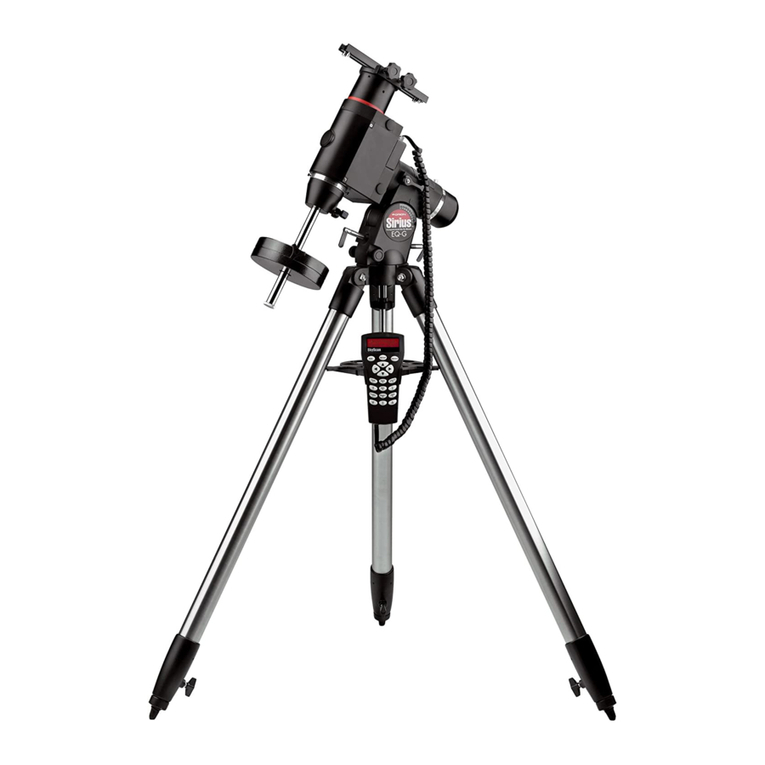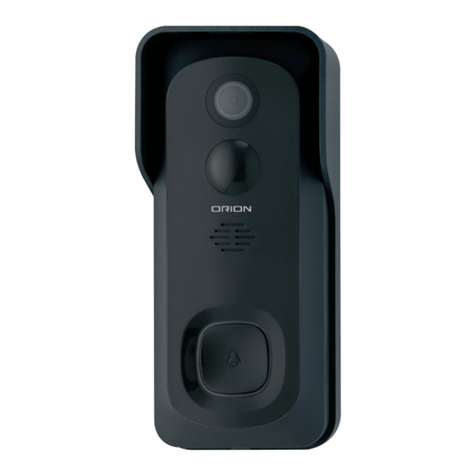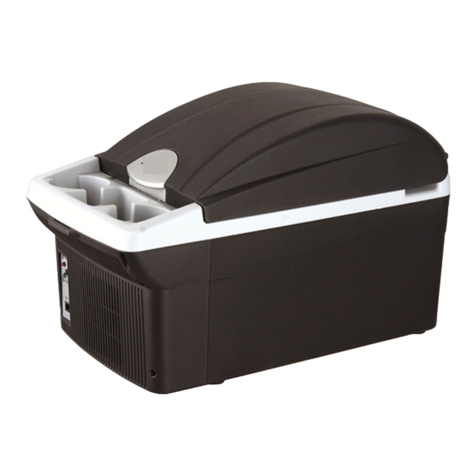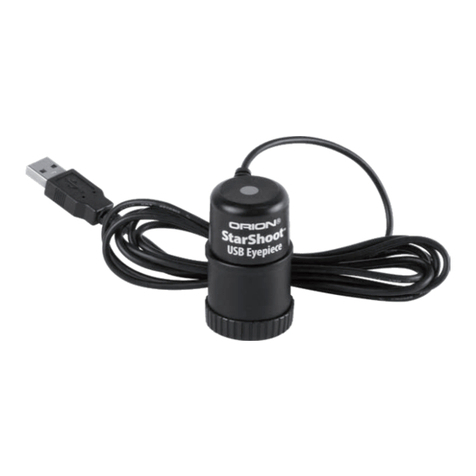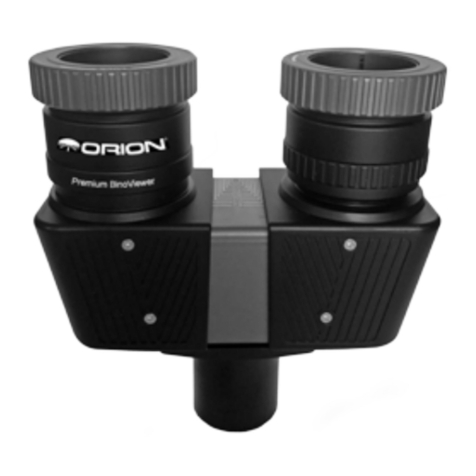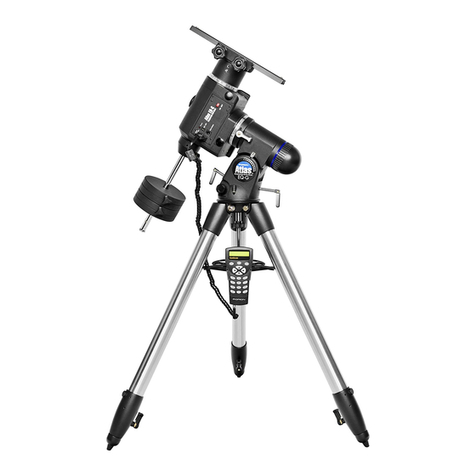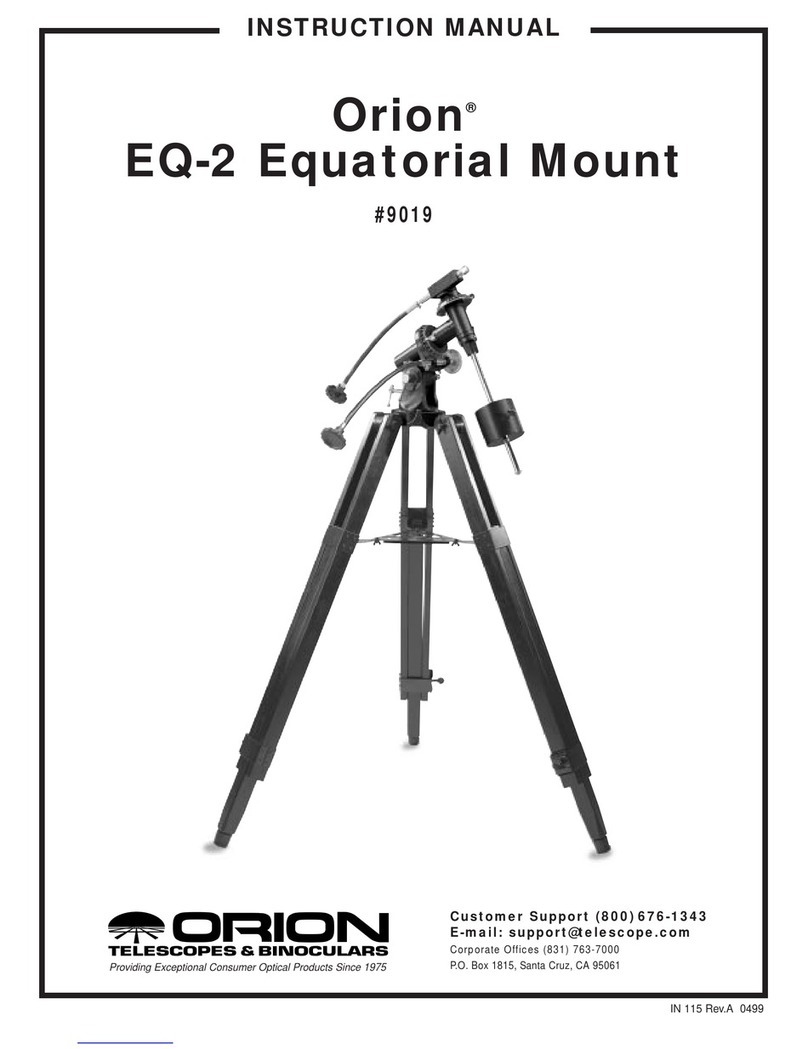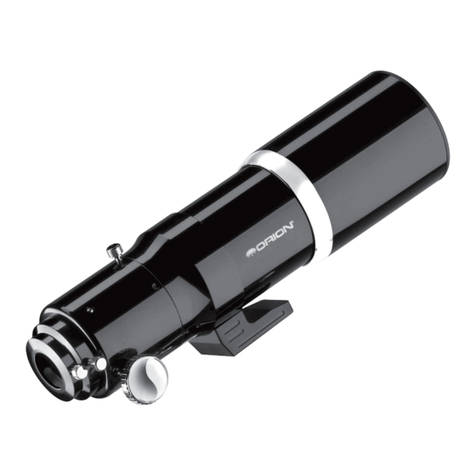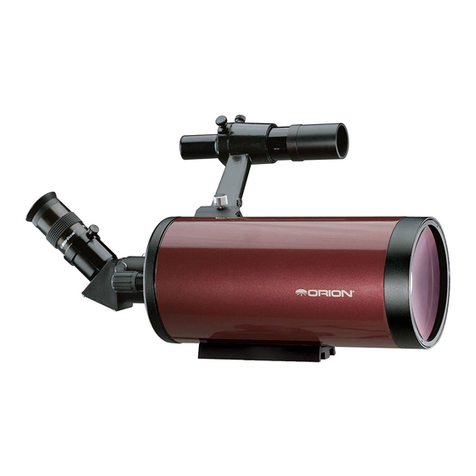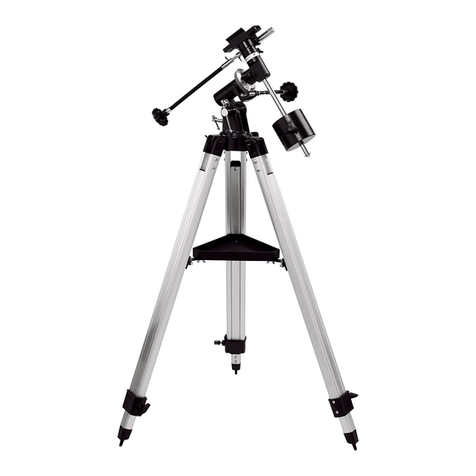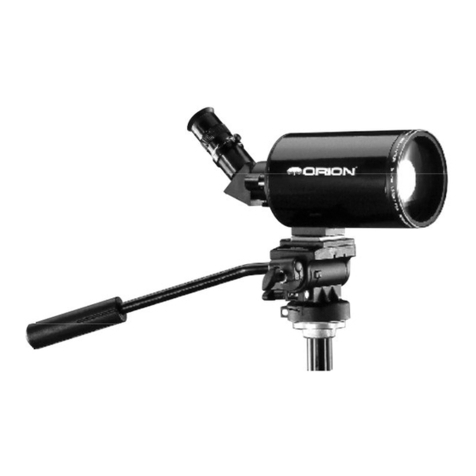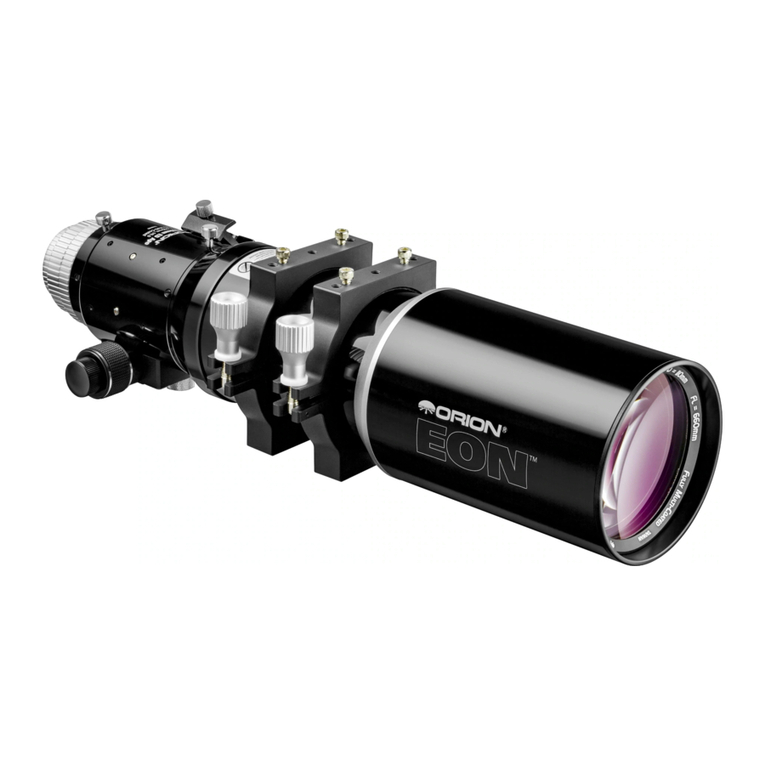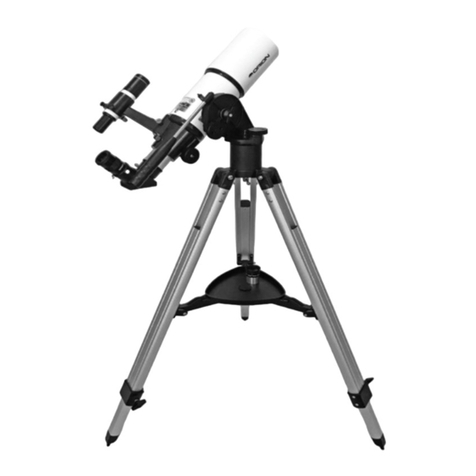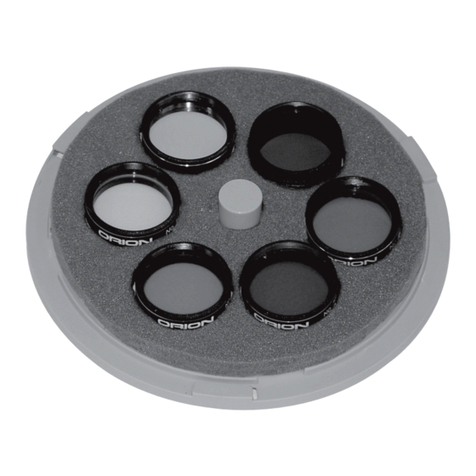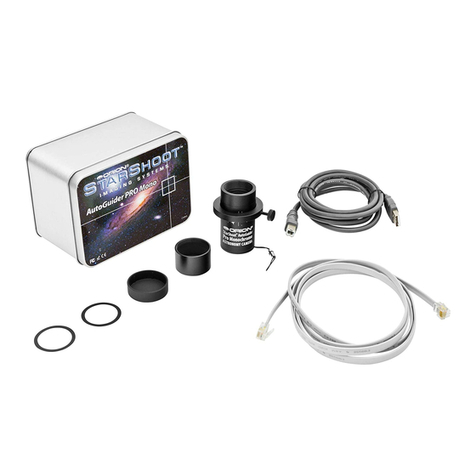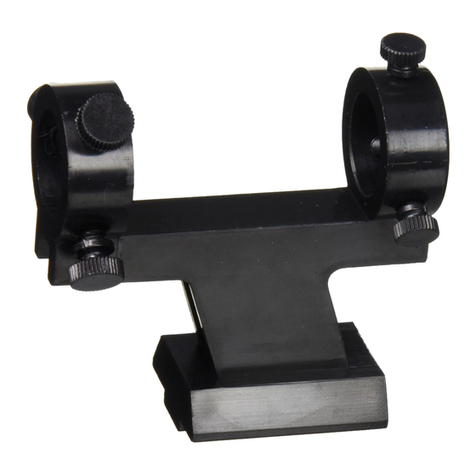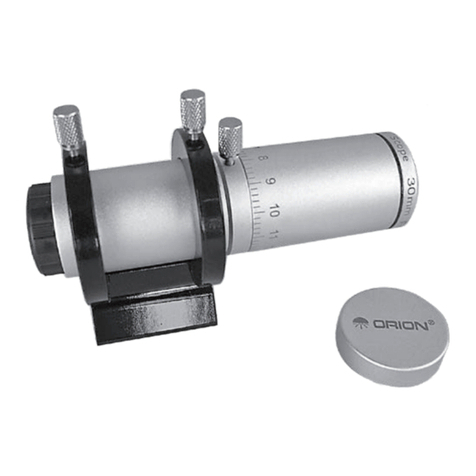
2
Congratulations on your purchase of a quality Orion 2" dual-speed
Crayford focuser. This focuser is intended for use with the Orion ED-80, ED-100,
Astroview 100, 120ST and the SkyView Pro 120mm. If you do not have one of
these refractors, the focuser may not be appropriate for your telescope.
Crayford focusers generally perform better than rack-and pinion models because
the design eliminates “focus shift”. Focus shift is when an image moves position in
the eyepiece when it is being focused. This is very hard to eliminate in rack-and-
pinon focusers due to slight gear and tolerance imperfections which cause the
drawtube to move slightly left or right when focusing. For the Crayford design, the
drawtube is constantly tensioned (by the focusing shaft and four “roller bearings”)
so the drawtube cannot move perpendicular to the desired motion.
The strong machined aluminum construction supports heavy 2" eyepieces as well
as heavy camera bodies. The smooth focus motion and ne-focus wheel allow
precision adjustments for critical focusing of eyepieces and cameras.
Installation
This focuser was designed to be a “drop-in” replacement for the refractors listed
above. If you have one of these telescopes, installing the 2" Crayford will be easy.
You will only need a Phillips head screwdriver. Use the following procedure:
1. Locate the three screws holding the existing focuser onto the tube wall. In the
case of the larger 120mm refractors, locate the screws that hold the focuser
to the optical tube adapter collar.
2. Remove these three screws, making sure to hold onto the focuser itself so it
does not fall when the last screw is removed. Do not lose the screws as they
will be required to install the new focuser.
3. Remove the 2" focuser from the tube.
4. Place the 2" dual-speed Crayford focuser where the other focuser was
previously.
5. Install the three screw, and tighten the screws rmly.
Usage
Using the 2" dual-speed low-prole Crayford focuser is very straightforward. Place
your 2" eyepiece in the focuser drawtube, and secure it in place with the thumb-
screw. Imaging cameras should generally utilize a 2" camera adapter when used
with the focuser. Insert the camera adapter the same way as a 2" eyepiece. To
focus, simply rotate one of the focus wheels.
The large focus lock thumbscrew near the focusing shaft (see Figure 1) locks the
drawtube into position once focus has been achieved. This is especially useful
when using a camera or heavy eyepiece in the focuser. Be sure this thumbscrew
is loosened when focusing. The socket head set screws above the focus lock
thumbscrew (see Figure 1) adjusts drawtube focusing tension. If a heavy eyepiece
causes the drawtube to move inward by itself (drawtube tension too loose), or the
focus wheels are difficult to turn (drawtube tension too tight), then you will want

